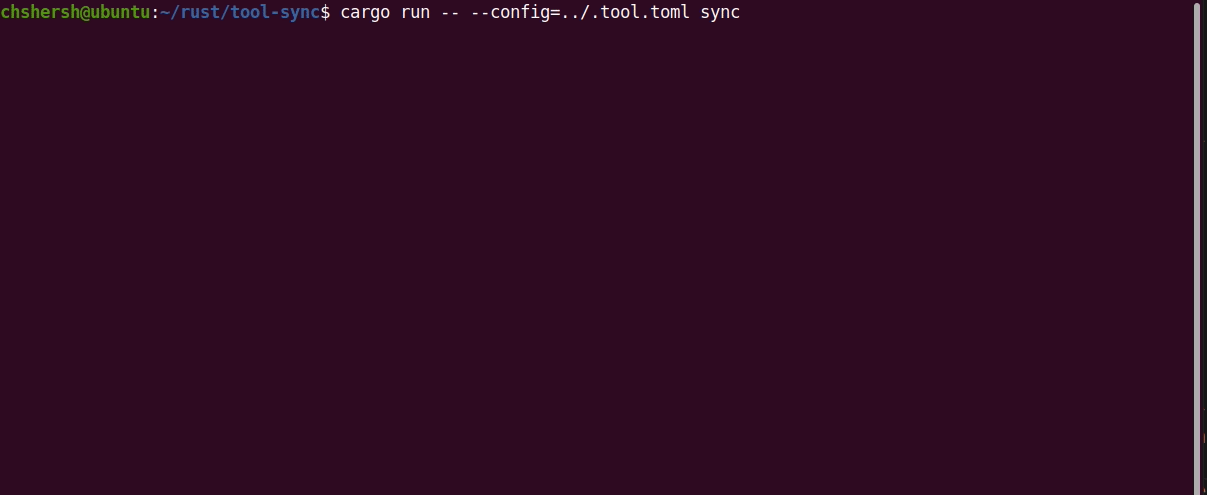-
-
Notifications
You must be signed in to change notification settings - Fork 18
New issue
Have a question about this project? Sign up for a free GitHub account to open an issue and contact its maintainers and the community.
By clicking “Sign up for GitHub”, you agree to our terms of service and privacy statement. We’ll occasionally send you account related emails.
Already on GitHub? Sign in to your account
[#33] Better end-of-sync output #80
Conversation
src/model/release.rs
Outdated
| impl From<&Asset> for Asset { | ||
| fn from(other: &Asset) -> Self { | ||
| Asset { | ||
| id: other.id, | ||
| name: other.name.clone(), | ||
| size: other.size, | ||
| } | ||
| } | ||
| } |
There was a problem hiding this comment.
Choose a reason for hiding this comment
The reason will be displayed to describe this comment to others. Learn more.
I don't know what is the best way to convert from &A to A so found usages of the From trait.
I was also thinking about ToOwned but to me ToOwned looked like it should be used for different types (e.g. &str / String, Path / PathBuf)
There was a problem hiding this comment.
Choose a reason for hiding this comment
The reason will be displayed to describe this comment to others. Learn more.
How I understand to_owned is that it is essentially a superset or clone, I am for putting in the smallest scope so the clone way would be best.
There was a problem hiding this comment.
Choose a reason for hiding this comment
The reason will be displayed to describe this comment to others. Learn more.
Thanks for the suggestion! Wasn't sure Clone could work here. It simplified code indeed 😌
src/sync/progress.rs
Outdated
| impl SyncProgress { | ||
| /// Creates new `SyncProgress` from a list of tools. | ||
| /// !!! The given `Vec` must be non-empty !!! | ||
| pub fn new(tools: Vec<String>, tags: Vec<String>) -> SyncProgress { | ||
| pub fn new(tool_assets: Vec<ToolPair>) -> SyncProgress { |
There was a problem hiding this comment.
Choose a reason for hiding this comment
The reason will be displayed to describe this comment to others. Learn more.
Oops, this should be tool_pairs instead of tool_assets
| } | ||
| } | ||
|
|
||
| eprintln!("{} Successfully installed {} tools!", DONE, installed_tools); |
There was a problem hiding this comment.
Choose a reason for hiding this comment
The reason will be displayed to describe this comment to others. Learn more.
Probably can also say where exactly they were installed 🤔
Sometimes, when locally testing with different configs, I don't remember all the directories 🥴
src/sync/prefetch.rs
Outdated
| let estimated_download_size: u64 = tool_assets.iter().map(|ta| ta.asset.size).sum(); | ||
| let size = HumanBytes(estimated_download_size); | ||
| eprintln!( | ||
| "{emoji} Estimated download size: {size}", | ||
| emoji = PACKAGE, | ||
| size = size | ||
| ); |
There was a problem hiding this comment.
Choose a reason for hiding this comment
The reason will be displayed to describe this comment to others. Learn more.
Maybe we should include that this is the size of the sum of all tools. This was not clear to me immediately so I had to look that up in the code.
|
Im happy that the structure of the fetching and actual downloading is the way it is in this change. It means actual decisions can be made based on the status of tools in the configuration. This might also enable a prediction about how many of the configured tools can actually be downloaded since there is a rate limit of 60 requests per hour. I think the hard limit we run into right now is 30 tools total. There is 1 api call to find the id of the tag and then 1 call to actually download it. |
Indeed, that's the plan 🙂
If you use a GitHub token, the limit is actually 5000 (and not 60). I believe we have some capacity until people need more than 2500 tools 👍🏻 |
|
Turns out my |
Resolves #33
d2c31ed
to
ffc96c7
Compare

Resolves #33
This PR changes the fetching algorithm significantly in an attempt to improve the final output. Specifically,
A single GIF worth a thousand words: